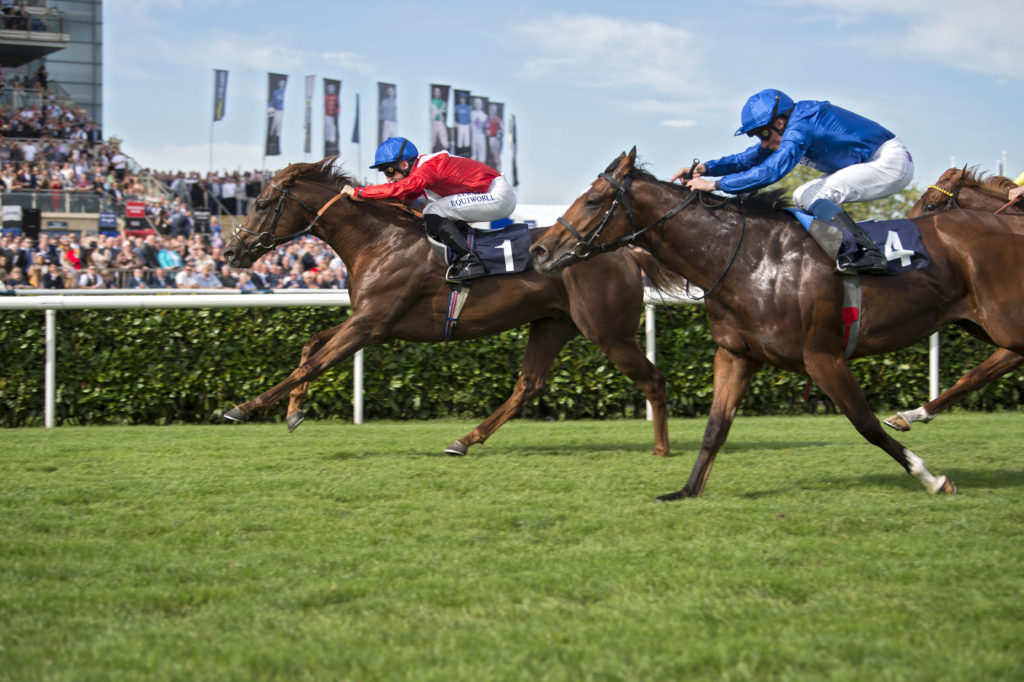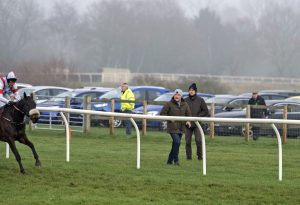You moved to the Racecourse Association in March after three years as Chief Executive of Wasps Rugby Club. How do you adapt from being a one-club man to having responsibility for 59 racecourses?
Within rugby there is the playing side, the performance and results, which are a key part of the success of the business. Within horseracing we don’t quite have that same results aspect, but the common link is the fact it’s about putting on great sports events and entertainment for customers.
For me, it’s very similar, a common denominator that makes me feel comfortable. The structure of racing, with so many moving parts, makes the job more challenging. It’s more complicated, but that makes it more fascinating.
What has been your previous involvement with racing?
I used to be an owner with William Muir about 20 years ago and enjoyed a few wins, our most successful horse being Countless Times. That allowed me to experience the owner’s perspective which has been quite helpful coming into this job.
I was involved with the sponsorship of the Met, one of South Africa’s biggest races, through my involvement with J&B Whisky, which was part of my brand portfolio when I was Commercial Director of the African division of Diageo.
You are also Chairman of Pentathlon GB (swimming, fencing, running, riding & shooting), as well as a board member of the BHA and the Levy Board. What makes the sport of racing such a big attraction to you?
I love the competitive aspect of any sport that inspires people who participate or watch. The inspirational facet is very exciting. I experienced that with the Wasps job. Racing’s complex structure and the way we do things makes it very hard to unlock that value.
“I want to help racecourses to be more profitable”
Professionally, it is demanding, interesting and that’s why I’m doing the job. For me, any new appointment must not be business as usual; it has to be a challenging opportunity. Racing certainly ticks that box.
Do you see similarities between racing and rugby through those tough-as-teak participants, the players and the jockeys?
Not similarities, but a difference in the way rugby players and jockeys are looked after from a conditioning and nutrition point of view. Rugby players are pampered beasts; every meal is prepared for them seven days a week, the same with their training regime.
I think jockeys have a tougher time. They are all effectively self-employed and don’t have the same supporting structure. They are busy every day, riding out in the morning, driving to race meetings, watching their weight, not to mention the race riding. They have less time to prepare as athletes.
The three facilities jockeys have at Oaksey House, Jack Berry House and Peter O’Sullevan House are leading edge and better than anything they have in rugby.
During your time with Wasps the club moved from Wycombe to Coventry and became one of the world’s largest rugby union clubs in terms of revenue. What have you learnt from rugby that might benefit racing?
The importance of the raceday experience. The way in which we built new foundations when we moved to the Midlands was not only to get people along to games but to make sure they had a fantastic day, providing food and drink options.
We also introduced an indoor covered fan village for 9,000 people and opened our own station so people could arrive by train into the site itself. We wanted people to have the best day possible at a sports event. If they do, they’ll come again. That’s extremely relevant to racing.
You introduced a retail bond scheme at Wasps that generated £35 million. What plans do you have to improve the finances of racecourses, some of which are struggling?
I want to help racecourses to be more profitable whether that’s in reducing costs or growing revenues. The ability to refinance, creating schemes like bonds or financing of stands is an individual course-by-course exercise; I am hopeful my experience can generate some ideas.
We need to find ways to be the most profitable industry possible, but we are under extreme pressure with betting shops closing as a result of the reduction in FOBTs; we have to look at new ways to create revenue, new ways to save costs. And try to do it in a way that helps all 59 courses, not just one at a time. Then we ought to have the benefit of making sure as many courses as possible stay profitable.
“The next two years are going to be very tough for the industry with the FOBTs impact”
The large racecourse groups like ARC and the Jockey Club have their own people in those finance roles, while the larger independents are in good shape. It is some of the smaller independents, which make up the backbone of the sport, that may need help. I have to come up with a plan of ideas to help all the courses.
One of the problems is that we are too fragmented and I am keen to see ways we can collaborate more on purchasing and marketing initiatives and do it all together, which is much better than trying to do it 59 times.
What is your view on the closure of Towcester and the takeover by the Chester Race Company at Musselburgh?
Before I joined the RCA, Towcester had already sold about half of its fixtures to ARC and the writing was on the wall. At least ARC’s purchase of the remaining Towcester days means those fixtures will be maintained.
I sincerely hope we will not see more closures and I think the Musselburgh outcome is a good one, with Chester Race Company taking over.
The next two years are going to be very tough for the industry with the FOBTs impact and racecourse closures could happen again, but I hope not.

Threat scores at the St Leger Festival, which could do more to help promote its sponsors according to RCA CEO David Armstrong – Photo: George Selwyn
The amount of racing is putting more and more pressure on the workforce, but fixtures generate profit. You have said there was “frustration and disappointment” after the BHA decision to axe 20 fixtures. So, what is the answer?
The answer is to take a much more evidence-based approach to how we work out the size and shape of the fixture list. A lot of my frustration was the lack of analytical decision-making that was taking place. We have a project under way, an economic analysis, intended to help us design the fixture list.
Take on board all the analytical and financial evidence, which is being handled by Portas, the sports consultancy. We would then be able to look back and see why there was a reduction or increase in fixtures; there would be more transparency and understanding of the fixture process.
Talking of transparency, should racecourses be more open about how much they make from media rights?
We must be careful about the commercial sensitivity of some of these arrangements and the media rights companies would be very keen to assert their prerogative to confidentiality and how the deals work.
We used to have prize-money agreements in the sport until a couple of years ago that required racecourses to spend a certain proportion of their media rights income on prize-money.
One way to get that back on track is to have the prize-money agreements back in place so the horsemen can be comfortable with the minimum levels.
I think we need to do a better job of explaining the economics of racecourses, some of which don’t have buckets of cash. All the time we must be aware of the possible reduction in media rights due to the falling number of betting shops and the effect it will have on prize-money. The fixed costs of running a racecourse are pretty high; racecourses do not have a lot of wriggle room.
You have been a racehorse owner in Britain. How can we attract more owners when the return is so paltry?
First, owners’ raceday experience is very important, making sure they have a great time out with their family and friends. We are getting better at that. Second, is to look at all the different models regarding syndicates, fractional ownerships and other ways to get involved with racing.
To bring the man in the street into the circle as a racehorse owner, even if it only costs £50 or £100, so the number of people owning a hair in a horse increases as well as those that can spend a bit more and possibly buy a horse. Syndicates have to be really simple to join and we have to push the message out there.
How can individual racecourses improve their customer data and understand the target audience?
We have improved in the last few years thanks to a joint initiative with a sports data marketing specialist, Two Circles, which allows us to look at advanced sales data, patterns and trends. We are beginning to make progress in how we use customer data, but don’t do it as well as some sports. We need to capture details of the non-booking racegoer so we can encourage them to come back.
There is an amazing statistic: 34 million people in the UK are aware of horseracing – that’s huge and more than in the case of football. We have to convert them from being aware to considering purchasing a ticket by telling them how exciting a day at the races is.
“Syndicates have to be really simple to join and we have to push the message out there”
We have to help them on the journey to our sport, then retain them by providing top entertainment.
Racecourse facilities for owners are a constant source of discussion together with badges for syndicate members and complimentary food. How does the RCA plan to improve the situation?
As an owner myself I went to a couple of racecourses where the experience was awful. It certainly had an impact on the enjoyment of my day’s racing, but then I went to a couple where it was very good. A number of racecourses have made improvements to owners’ and trainers’ facilities and there are plans to upgrade facilities on other courses in the next 12 months.
Some courses just don’t have big enough facilities, but the message is that the RCA and racecourses really do value the importance of the owners’ experience. We ran a trial at Kempton recently for large syndicates that went very well. We are looking at that as a new model for syndicate members.
There is a lot of sponsorship of individual races. Is there an opportunity for bigger all-round sponsorship packages as in other sports?
Yes, but we have to continue to make the sponsorship package exciting and interesting for the sponsor by delivering the value they are expecting. We have to get better at selling sponsorship of a stand or even a racecourse, telling the sponsor what the benefits are going to be. There are good examples of success at courses like Ascot and Cheltenham.
We have tremendous TV coverage; ITV is outstanding and thanks to Racing TV and Sky every race is screened. We must improve how we use TV for sponsors. Doncaster has a sponsor of its main grandstand – Lazarus, a construction company – but during the entire coverage of the St Leger meeting ITV didn’t have a camera in position that showed the Lazarus stand. It was a missed opportunity.
Bad behaviour on racecourses hits the headlines every year. How is the RCA tackling this problem?
In the last 12 to 18 months we have seen a reduction in the negative headlines, which is encouraging. There is a problem with irresponsible drinking and Drink Aware, a campaign partner of the racecourses, is available to help. There is also an increased number of sniffer dogs on racecourses to combat the use of drugs.
It’s not about having hundreds of security staff all over the racecourse because that ruins the atmosphere of the day. It’s about encouraging responsible behaviour, and even being gamble aware. Will we ever do it, 100 per cent? I’m afraid I don’t think so.
Where do you see British racing in five years’ time?
I think we will have far more people involved in racehorse ownership; we will have recovered from the impact of betting shop closures and hopefully have 59 thriving racecourses; more horses in training, more jockeys and maybe more fixtures.
More people going racing and an improvement in the way the sport presents itself in terms of marketing and animal welfare.



